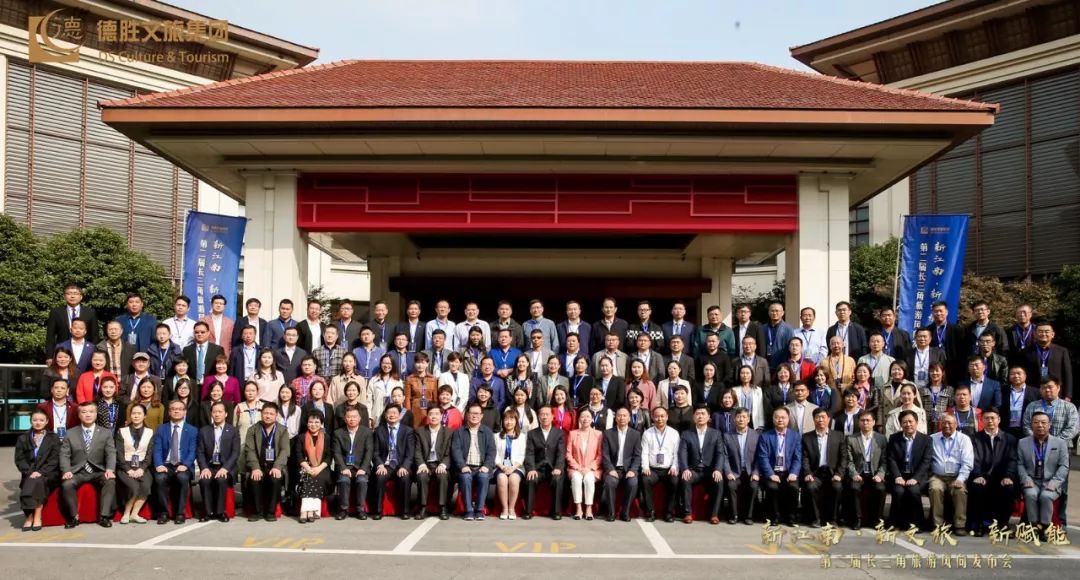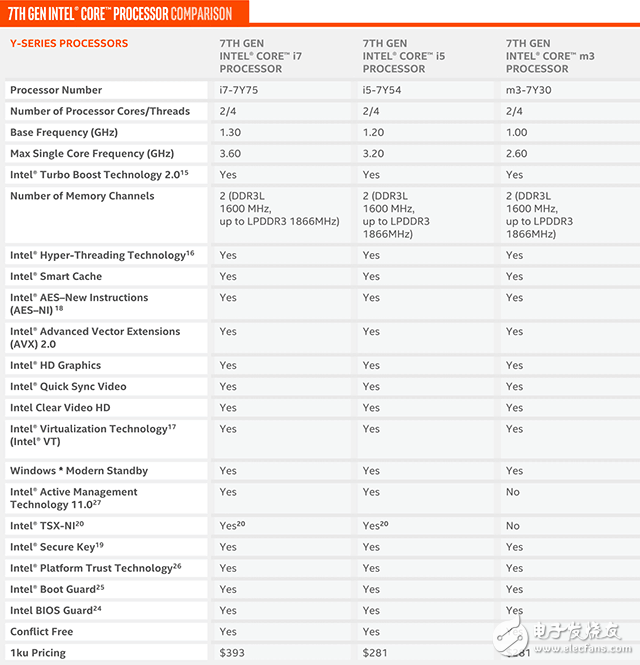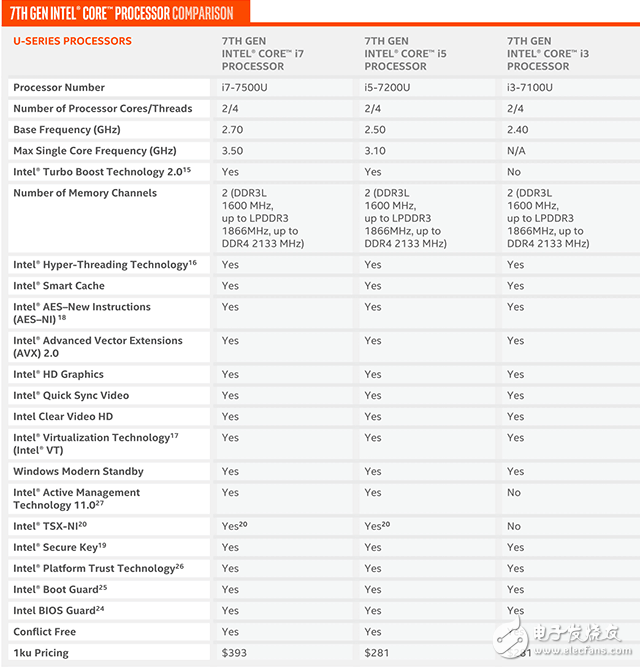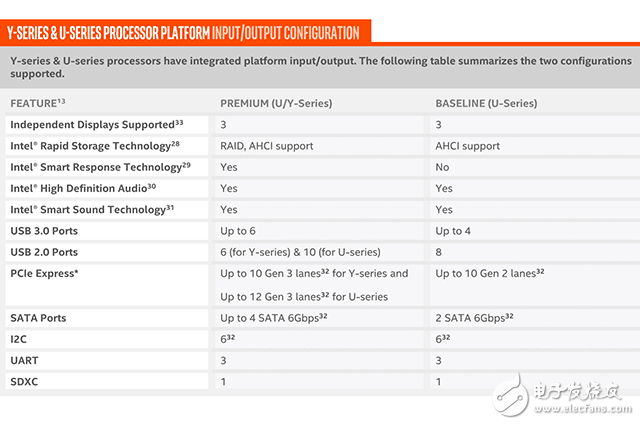On August 30th, Intel officially released the seventh-generation Core processor Kaby Lake. The products continue to adopt the 14nm process. The first version is for the mobile market, including the U series and Y series. The main energy consumption ratio is the lowest TDP as low as 4.5W. The U series TDP is only 15W. For the entire decade since the release of the Core 2 processor in 2006, Kaby Lake is a product of Intel's slowdown in the TIck-Tock strategy. Its specifications are not much different from those of Skylake. It is an architecture-optimized product. Its leading point is the energy consumption ratio. .
According to Intel's plan, the Kaby Lake series processor is only available for 2-in-1 ultra-thin notebooks. Enterprise, workstations, standard Iris graphics units with Iris graphics unit and desktop and notebook fever markets are coming to 2017. It will not be released until January.

6 Kaby Lake processor specifications
When the Kaby Lake processor was released, Intel also made improvements to the mobile phone product naming. It removed the names of the previous Core m5 and m7 and changed it to i5 and i7, but the m3 still remains, which is incredible. However, in terms of specifications, the Kaby Lake Y/U series all adopt dual-core four-thread design and GT2 GPU core graphics.
Kaby Lake Y series processor

Kaby Lake Y contains three new products: Core m3-7Y30, Core i5-7Y54, Core i7-7Y75, CPU base and Turbo frequency are 1.0-2.6GHz, 1.2-3.2GHz, 1.3-3.6GHz, GT2 GPU model is HD 615, with 24 EU processing units, supports DDR3L 1600MHz and LPDDR3 1866MHz memory, of which Core m3-7Y30 has removed Intel AMT & TSX-NI support. The three products in the price range are $281, $281 and $393.
Kaby Lake U Series Processor

Kaby Lake U series also includes three products: Core i3-7100U, Core i5-7200U, Core i7-7500U, CPU base and Turbo frequency are 2.4GHz, 2.5-3.1GHz, 2.7-3.5GHz, GT2 GPU model is HD 620, also 24 EU processing units (higher guess frequency), also supports DDR3L 1600MHz and LPDDR3 1866MHz memory, but added support for DDR4 2133 memory. The low-end Core i3-7100U still does not support Intel AMT & TSX-NI technical support, and the price is consistent with the three Y series products, respectively, $ 281, $ 281 and $ 393.
Supporting platform
On the desktop, we know that Intel will introduce a new generation of 200 series chipset products, and the processor interface continues to maintain LGA 1151, as for the new interface that is 10nm Canon Lake. For the previous generation Skylake-Y NUC users M.2 bandwidth limitation may not be unfamiliar to PCIe 2.0 x4, while the new OPI 3.0 (desktop version is DMI 3.0), Y series processors can provide 10 PCI-Express 3.0 channels, and The U series processor provides 12 channels, so the Core i5/i7 processor can even support 2 or even 3 M.2 SSDs.

These SoC-designed Kaby Lake Y/U series processors, high-end series support RAID and AHCI disk modes, four SATA 6Gbps interfaces and six USB 3.0 ports, while the low-end U series also offers two SATA 6Gbps The interface has been removed from the RAID mode and the USB 3.0 interface has been reduced to four.
Magnetoelectric Proximity Switch
The magnetic proximity switch is a kind of proximity switch. The magnetic proximity switch is one of many types in the sensor family. It is made by the use of electromagnetic working principle and advanced technology. It is a position sensor. It can transform the non-electricity or electromagnetic quantity into the desired electric signal through the change of the positional relationship between the sensor and the object, so as to achieve the purpose of control or measurement.
Motion Sensor Control Switch,Photoelectric Switch Sensors,Plug In Photoelectric Switch,Magnetoelectric Proximity Switches
Changchun Guangxing Sensing Technology Co.LTD , https://www.gx-encoder.com
